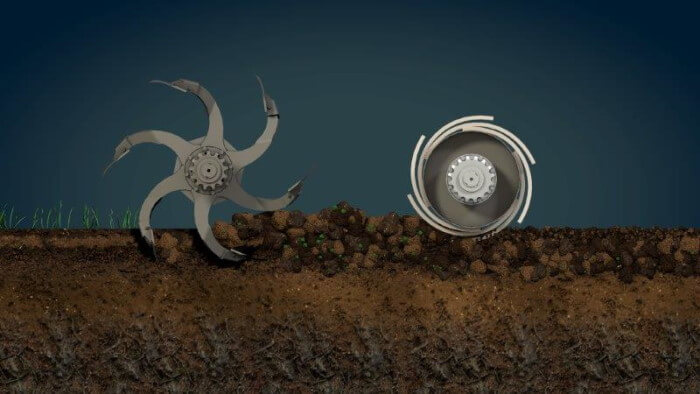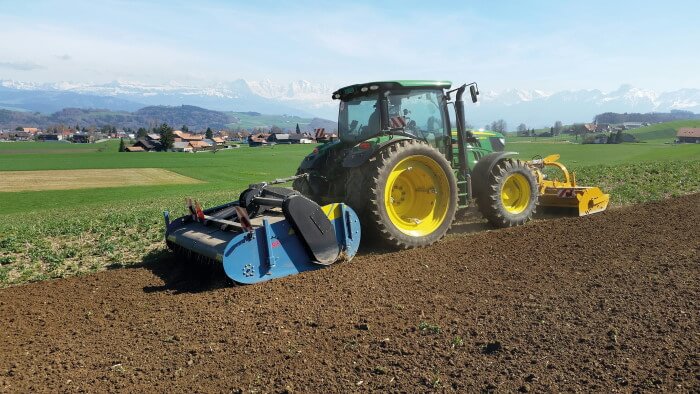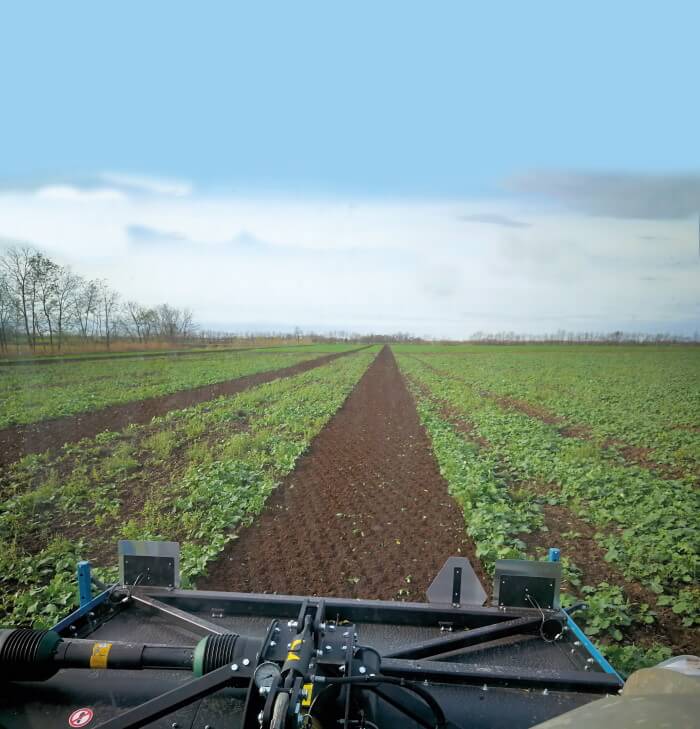Imants Turf Care

Spaders
Spading means mixing organic material with the living topsoil, incorporating crop residues and creating a seedbed, mixing green manure so it can break down and increase the nutrients in the soil for the next crop. This is done in one pass while evenly mixing and aerating creating the best possible soil conditions for ultimate growth.
The rotating movement of the spade shaft with spades ensures an optimal mixing effect.
Because of this, crop residues, manure, compost or green manure can be mixed with the soil into the most biologically active layer so that they can be quickly decomposed.
Because spading machines do not form a hard pan in the soil, capillary action remains intact, so rising groundwater can reach the roots of plants when they need it.
During spading, the subsoil is mixed, but not completely turned over. This preserves most of the soil temperature, reducing the time it takes for the soil to warm up. This results in faster germination. The deeper soil layers are given time enough to warm up as the plants grow.

Fumigation
There is an optional Fumigation unit which can be attached to specific models, the 'goose feet' apply the fumigant directly into the soil reducing the amount of product needed but also the risk of spray drift.
The fumigant is applied at half the working depth typically to the depth of 10- 12.5 cm (4-6") and is mixed through the soil profile by the rotating spading blades. Then the soil surface is levelled and consolidated by the rotating harrow and "sealed" by a power driven smooth roller or a tire packer.
The rotating spading machine proved to be the only equipment to successfully incorporate the non-fumigant nematicides/insecticides (Mocap, Temik, Vydate) evenly through the total depth of the tillage layer.
Incorporating these compounds with spring tine cultivators or even with rotary cultivators resulted only in mixing them in the top 5 to 6 cm, which is in most cases insufficient to control nematodes and soil-borne insects.
There are lots of different options in terms of working width and hp requirements for either horticulture or agriculture purposes.
Please enquire for more information on the range.


Copyright © Matamata Ag 2014